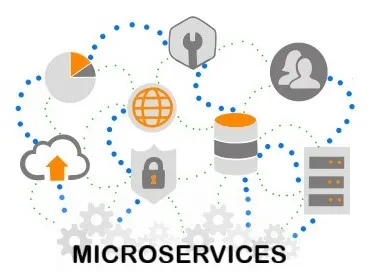
Microservices for Modern Enterprise
By: Praveen Kosgi, Enterprise Solutions Director, VMD Corp
Process is the crucial DevSecOps enabler
Published on May 24, 2021Why explore microservices for a modern enterprise? Are they really a value-add? Is it worth the cost and effort? The simple answer is yes. Your modern enterprise is missing a significant value add if it has not yet started the journey towards microservices. As a leader, you should begin asking your IT department what they are doing about it and where they are in the process.
To understand the need, consider the changes in our IT landscape over the last two decades. We moved from mainframes to client servers, and then to Enterprise Resource Planning (ERP)/commercial-off-the-shelf (COTS), now operating mostly with mix of ERP/COTS, Software-as-a-Service (SaaS), Web, and Mobile Apps. Organizations continue to have challenges keeping up (availability) and catching up (upgrades) with software and systems, whether in-house, vendor supported, hosted in Cloud, or On Prem. The issues were are mostly related to integration, maintenance, deployments, and complexity that grows overtime with systems. Interestingly, labor costs are only marginally different, whether applications are implemented in house, COTS, or outsourced. Organizations can perform a Total Cost of Ownership (TCO) for each system over a period of time to get an accurate picture of this.
How do microservices help solve these challenges?
Microservices are nimble services that provide simplicity and agility; they allow — or even force — decomposition of systems’ complexities to simplify the enterprise IT landscape. These are implemented and operated at a business function level, not at the department or overall enterprise level. This brings agility to move the digital landscape towards your business performance, not the other way around. Additionally, microservices can be implemented and hosted in variety of technology environments including On Prem, Cloud, or Hybrid. The development of microservices can be accomplished mostly with opensource technologies, which means there is no licensing cost over time, and you always stay current with technology and innovation because you are tapped into millions of developers who are innovating to solve IT challenges in opensource communities. This potentially means you are saving millions in software upgrades. Many of the classic integration and maintenance challenges are removed with microservices because they are built to be self-contained, include natively REST API-based services for transaction processing and information sharing, and empowered with DevSecOps — automated deployments, testing, and security scanning.
In this approach, the IT landscape in a modern enterprise with microservices would scale to the business where surge is needed (based on business functions that need it); this greatly optimizes the TCO and the cost when hosted in the Cloud. When hosted in Container Platforms/Auto Scaled Hosts, you never have to pay for IT workloads that are unused or idle for future surge needs.
As a tech savvy leader, be disruptive; ask your IT department about microservices and don’t be afraid to listen to migration challenges. Notice, as more challenges are reported by your IT department for migration to microservices, that is how complex the organization’s IT landscape is and it needs to be unwound. Start soon, even if it is a small business function you want to test it out! Feel free to reach out to us, we help our customers explore microservice solutions and enhance their IT landscape every day!